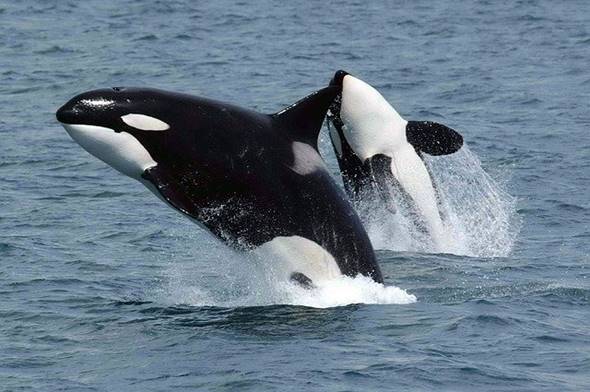
An Orca or commonly called killer whale belonged to the family of dolphins and was listed to be the largest of them all. Even if they do not usually attack humans, they are named “Killer Whale” because of their capability to take down other large sea creatures like whales and sea lions. They eat almost every animal they can find along the coastline, air over the water, and in the sea.
The entire killer whale population is still unknown until today, so this mammal’s conservation status is still unavailable. There are still many things to discover out from the Orcas, and there are already facts about them that you may not know ever existed like the few things here in this article.
Killer Whale Tilikum Killed His Trainer
Our killer whale facts will not be interesting without including the deaths of few people because of them. Tilikum is recorded as the most notorious and World’s biggest killer whale ever captured. This orca’s infamous popularity started in 2010 when he pulled Dawn Brancheau, a SeaWorld trainer, into the pool and killed her.
This news spread all over the world, leaving a vicious image to the orca. In 2016, SeaWorld announced the death of the killer whale due to a lung infection. He was held captive for 36 years and had inspired millions of people despite the deaths of people involved.
3 To 10 Years Birth Interval For A Female Killer Whale
Another interesting fact about these killer whales is that it takes between three to ten years before they can reproduce again since the last time they gave birth. They can also have only one offspring at a time and typically with seventeen months-long of pregnancy and up to two years of nursing.
A newborn orca is usually about 2.6 meters long (about 8.5 feet) and 120 up to 160 kg (265 up to 353 lbs) at birth. A mother usually nurse’s calves for five to ten seconds each time for several times per hour. This goes every time until the calf has grown enough.
Female orcas usually breed between thirteen to fifteen years of age, but the youngest that has ever been recorded is at eleven. They also undergo several cycles of oestrus the entire time. Mostly, the bond between the mother and calf weakens, making the young orca go on its own. But, there are instances where they also stay in the same pod their entire life.
They Can Eat At Around 227 Kilos Of Food A Day
Orcas belong in the top-level predators. They were observed to be hunting over one hundred forty species of marine animals like rays, sharks, bony fish, and many more. They were also reported to eat other animals such as seabirds, leatherback sea turtles, moose, and sea cows.
These enormous predators regularly hunt other sea mammals and bigger fishes. Orcas also track in groups using their own technique to complete their search like making use of their tails in splashing out seals and penguins then capture them using their jaws.
Echolocation As A Way Of Communication
Studies found out that killer whales create a sound for two reasons; navigation and communication. They can make several noises like echolocation clicks, pops, jaw clapping, and whistles. These do not only help them to navigate but also to communicate with other pods.
Orca’s way of communication lies at the center of their social awareness. Each member of their family can rarely hear each other. The sound they make is as loud as an engine of a jet plane that echoes many miles. Everyone knows where everybody is because of the solidity of their attachments.
Pollutants Are Killing Killer Whales
Half of the killer whales population is at high risk and could disappear because of improper disposal of trash, chemical waste, and oils into the ocean. If people continue being irresponsible in taking care of these issues, the extinction of orcas may be expected.
One of the chemicals harming the killer whales is the PCB or polychlorinated biphenyl. This chemical is commonly used in sealants, paints, plastic, and electrical equipment, and are known to be highly toxic.
Since killer whales are top predators, they’ll get to absorb all PCB pollutants that are taken by all the prey that belong in their food chain like seals, fish, and even sharks. These chemicals restrict female ovaries and limit their potential to reproduce. Also, chemicals weaken the immune system.
In A Nutshell
There are a lot more exciting facts about killer whales, but we have shared the information that we think everyone should be informed of, especially when it comes to the things that harm them. These giant sea creatures may seem scary, but like humans, they also get harmed. At the end of the time, we need to save them from possible extinction.
We are happy to present this collaborative post to offer valuable information to our readers.


